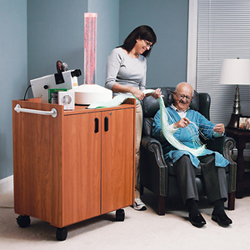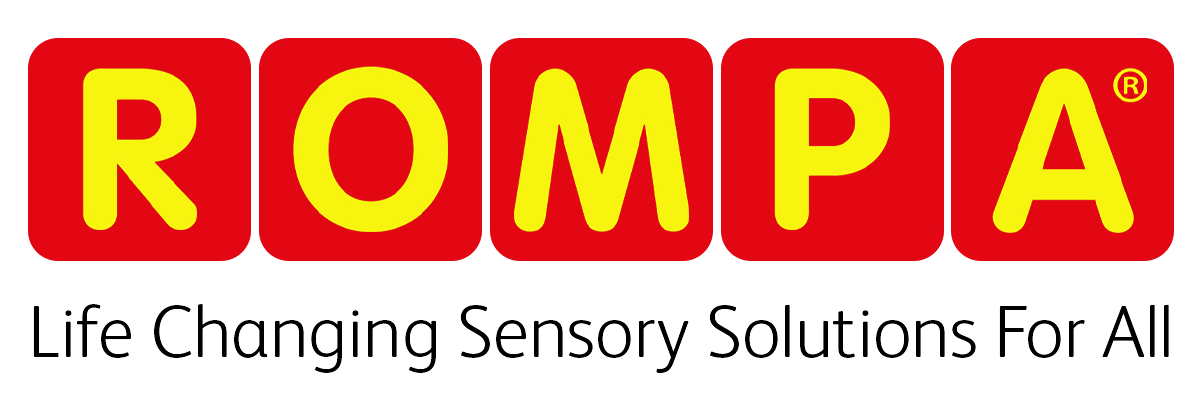Overview
Dementia is a syndrome that may be caused by a number of progressive disorders that affect memory, reasoning, behaviour and the ability to carry out everyday activities of daily living. Dementia mainly affects older people but can be experienced by people in middle age. There are 35.6 million people living with dementia worldwide and this number is increasing. There is an urgent need to develop novel solutions beyond the limited successes of pharmacological that meet the needs of people with dementia and their carers.
For the patient with dementia the world can be a very fragmented and confusing place. Without carefully constructed environments and interactions that focus on their remaining skills they are likely to experience isolation, confusion and sensory deprivation. Many of these problems can result in disorientated, confused behaviour. The link between sensory deprivation and mental health has been frequently documented. Richman ‘69 reflected on the link between sensory stimulation and elderly people with mental health problems as being ‘a fact of life leading to poor function’. Marcus ‘83 also identified sensory stimulation as being necessary to bring the ‘regressed’ older person back in touch with their environment. By stimulating the reticular activating system of the brain it is possible to filter stimuli and prepare the person for engagement in everyday activity. One such tool that has been shown to do this is the Snoezelen environment. The Snoezelen provides a range of sensory stimulation that may be tailored meet the needs of people with dementia in order to heighten awareness and assist in the preparation for engagement in meaningful activity.
The disorientated behaviour exhibited by patients with cognitive decline incorporates three main components. That of Learning, Memory and Feelings.
- In learning, new information is not assimilated leading to loss of adaptability and avoidance of new situations. Snoezelen does not rely on episodic or semantic memory therefore is accessible regardless of the level of dementia.
- Memory impairment, particularly that of short-term memory loss leads to preference for discussion of events focused in the past. This allows for maintenance of social skills and levels of comprehension. The Snoezelen can be arranged to focus on a theme and thereby encourage reminiscence.
- Feelings of frustration and inadequacy are fuelled by the loss of cognitive skills. This may lead to mood swings and feelings of loss of control. The level of stimulation in a Snoezelen room can be adjusted up or down to manage levels of arousal such as anxiety or drowsiness.
The Snoezelen environment
The ‘Snoezelen’ environment provides direct and indirect stimulation of sensory modalities and can be used individually or as a collection to provide a sensory approach. Equipment that might suit people with dementia may include:
- Visual stimulation (Sight) - Optic fibre spray, Projector with reminiscence images, Bubble tube.
- Auditory stimulation (Sound) - Relaxation tapes, Vibration noise from equipment, Wind chimes, Music from their past eg. Beetles / Glen Miller etc
- Olfactory (Smell) - Aroma therapy, Perfumes and aftershave that are familiar
- Gustatory (Taste) - Any food substance that provides distinct flavours or texture.
- Tactile stimulation (Touch) - Vibrating cushions and mattress, weighted blanket with different textured fabrics.
- Proprioceptive and vestibular stimulation (Movement) - Rocking chairs, Stretching and reaching.
The Snoezelen should be considered as a ‘toolbox’ with different types of sensory equipment to meet the different sensory needs of the person using it. The Snoezelen should not have all the equipment switched on at once.
Assessment
Before using the Snoezelen with a person with dementia an assessment should be undertaken. Assessment tools may include:
- The Sensory Assessment and Profiling Tool (Collier, 2003) – This assessment identifies the sensory preference of a person. It is recommended that the Snoezelen session should start include equipment based on the person’s identified sensory preference. This will assist with the transition into the Snoezelen room and can be used as a starting point for stimulating other senses as the therapy progresses.
- The Adult Sensory Profile (Dunn, 2002) – This assessment identifies the level of stimulation a person needs. The assessment identifies those who are sensory seekers / low registration, needing high levels of stimulation; or sensory avoiders / sensory sensitive, needing lower levels of stimulation. With this information the level of stimulation required in the Snoezelen can be adjusted.
- The Pool Activity Level (PAL) Instrument for Occupational Profiling – This assessment gives guidance on how to run a Snoezelen session given the severity of their condition. This includes how to structure the activity, guidance in how to facilitate the Snoezelen session, activity characteristics and guidance on how to start and end the session.
Guidance in using the Snoezelen room
This guidance should be used in conjunction with robust assessment tools. Guidance for using the Snoezelen can be found in the Pool Activity Level (PAL) Instrument for Occupational Profiling (Pool, 2011). A more psychological approach can be found in the following article ‘Functional analytical multisensory environmental therapy for people with dementia’ – International Journal of Alzheimer’s disease (2012)




